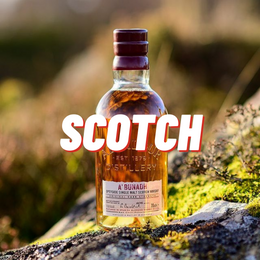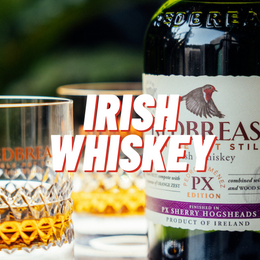What the heck is that?
Most people think of whisky as an amber liquid, and when reading age statements, drinkers would get the impression that this amber liquid is the result of many years of aging. It might be surprising for some to know that the actual process of making whiskies is not usually more than 2 weeks from barley to distillation, which produces a colorless alcohol called "new make". This new make is then stored in wooden barrels for a number of years, which comprises the majority of the whisky's production time.
Whiskies are stored in wooden barrels to help remove undesirable byproducts of fermentation such as sulphur, and also to help simmer the whisky and to allow the barrel to itself impart flavor (and the amber color) to the whisky. This process is called maturation.
During maturation, as wooden barrels are porous, a percentage of the whisky evaporates, reducing the overall volume of whisky left in the barrel. In the past, distillers would say that the whisky was taken to the heavens by angels, hence the name "angel's share". This percentage depends on environmental factors such as ambient temperature and humidity, and ranges from 2% to 5%.

Who cares?
This is of importance to distillers who would have lesser whisky to be bottled as the whisky matured for longer periods of time. For example, a 12 year old Scotch can lose up to 25% of its total volume by the time it is bottled. This also affects the overall taste of the whisky and can contribute to whiskies taking on too pungent flavors, which must be taken into account when producing the desired whisky. The amount of water versus alcohol that comprises the angel's share also matters. In high humidity environments, particularly Asia, it is the alcohol that mostly comprises the angel's share, reducing the overall alcoholic content of the whisky.
Thus distillers must factor in such environmental factors in determining how to adjust their maturation process in order to produce the desired whisky profile. For example, the Taiwanese Kavalan Distillery is located in a high humidity environment and as such typically produces non-age statement whiskies as they are unable to mature their whiskies for any more than 3-5 years without losing too much alcohol to the angel's share.
Why should I care? More importantly, what should I look out for?
Angel's share is a big reason why older whiskies tend to cost more (taste aside), as lesser whiskies left for bottling means each bottle would have to be priced higher. If you would like to drink well-aged whiskies, be prepared to pay more because of the higher angel's share!
When choosing whiskies to try, you want to look past age statements in Asian distilleries which are located in high humidity environments, and consider giving them a try anyway. The lack of an age statement is not always a bad thing!
The high humidity tends to accelerate the aging of whiskies. Take for example Kavalan Distillery which estimates that for every 4 years of aging in its warehouse, this equates to 10-12 years of aging in Scotland.
The lack of an age statement has not stopped Kavalan from winning big whisky awards, having been named World's Best Single Malt. So you don't wanna miss out! Age is just a number (sometimes)!








